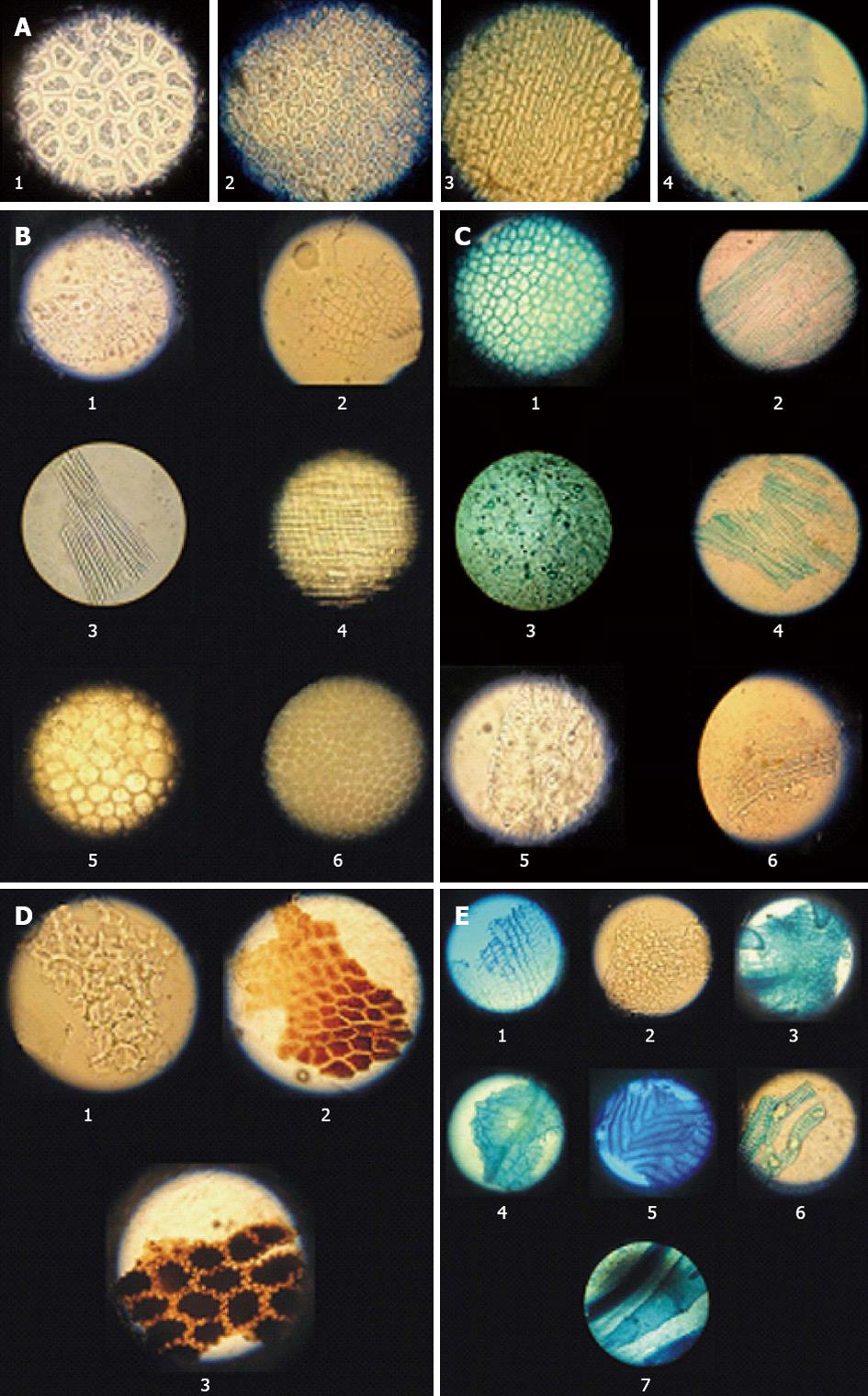Copyright
©2013 Baishideng Publishing Group Co.
World J Gastroenterol. Mar 28, 2013; 19(12): 1901-1911
Published online Mar 28, 2013. doi: 10.3748/wjg.v19.i12.1901
Published online Mar 28, 2013. doi: 10.3748/wjg.v19.i12.1901
Figure 1 Microscopic characteristics of the herbal ingredients of Magliasa.
A: Lepidium sativum seed. A1: Pericarp; A2 and A3: Sclereids of the mesocarp; A4: Parenchyma of the endosperm; B: Linum usitatissimum seed. B1: Endosperm; B2: Epidermis; B3: Fiber; B4: Sclerenchyma; B5: Parenchyma of the testa; B6: Pigment layer of testa; C: Terminalia chebula fruit. C1: Epidermis; C2: Fiber; C3: Parenchyma of the mesocarp; C4 and C5: Sclereids; C6: Vessels; D: Allium ampeloprasum cv. Porrum seed. D1: Endosperm; D2: Mesoderm; D3: Epidermis of the testa; E: Bunium persicum fruit. E1: Endocarp; E2 and E3: Endosperm; E4 and E5: Sclereids of the mesocarp; E6: Vessels; E7: Vittae. Magnification of all images was 40.
- Citation: Rahimi R, Baghaei A, Baeeri M, Amin G, Shams-Ardekani MR, Khanavi M, Abdollahi M. Promising effect of Magliasa, a traditional Iranian formula, on experimental colitis on the basis of biochemical and cellular findings. World J Gastroenterol 2013; 19(12): 1901-1911
- URL: https://www.wjgnet.com/1007-9327/full/v19/i12/1901.htm
- DOI: https://dx.doi.org/10.3748/wjg.v19.i12.1901









